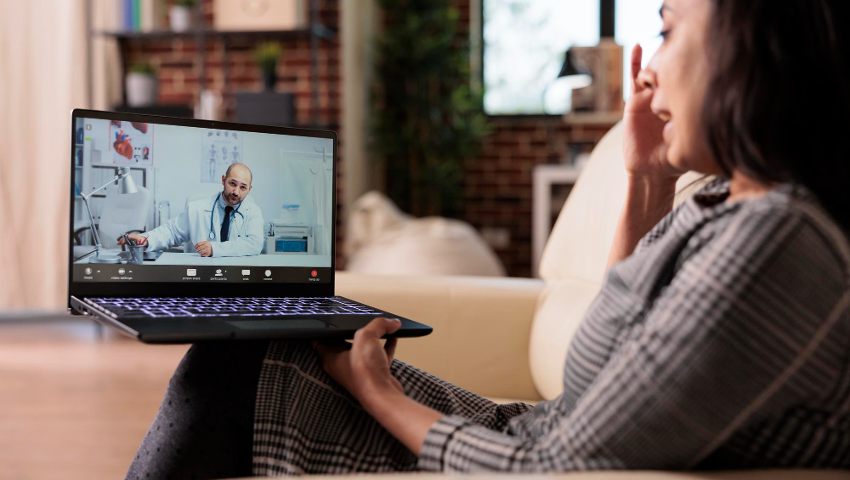
As the global healthcare landscape rapidly evolves, telemedicine is no longer just a convenience—it’s a necessity. In 2025, we’ve entered the era of Telemedicine 2.0, a transformative leap from basic video consultations to a sophisticated, integrated, and intelligent healthcare delivery model. With advances in AI, IoT, 5G, and data analytics, remote healthcare is breaking down barriers, delivering personalized, efficient, and accessible medical services to millions worldwide.
In this blog, we’ll explore what Telemedicine 2.0 looks like, its impact on patients and providers, and how it’s redefining the future of digital healthcare.
Telemedicine began as a way to provide virtual consultations, mainly in rural or underserved regions. While the COVID-19 pandemic accelerated its adoption, many early platforms were limited in functionality—primarily offering video calling with limited diagnostic or treatment support.
Telemedicine 2.0 goes far beyond video chats. It integrates smart devices, cloud-based EHR systems, real-time data sharing, and AI-driven diagnostics to enable holistic, continuous, and context-aware care. This evolution not only improves outcomes but also enhances patient engagement, lowers operational costs, and reduces the burden on hospitals and clinics.
AI algorithms now play a crucial role in remote diagnostics. From detecting early signs of diseases like diabetic retinopathy to analyzing cough patterns for respiratory illnesses, AI enhances decision-making for clinicians. Combined with predictive analytics, it enables proactive care—identifying at-risk patients before a health crisis occurs.
Wearables like smartwatches, biosensors, and remote patient monitoring tools continuously collect health data—heart rate, oxygen levels, blood pressure, and more. This data flows in real-time to clinicians, enabling ongoing monitoring and timely intervention.
In 2025, IoT-enabled devices are increasingly integrated with telehealth platforms, offering a comprehensive view of a patient’s condition outside of clinical settings.
High-speed 5G networks eliminate lag and enable high-definition video consultations, real-time data transmission, and even remote surgeries using robotic tools. For rural or remote regions, 5G ensures that telemedicine services are just as reliable as urban healthcare facilities.
With the help of cloud infrastructure, patient data is accessible securely and instantly by healthcare professionals across locations. This seamless interoperability improves continuity of care, reduces duplication of tests, and ensures better clinical outcomes.
Improved Access to Specialists – No need to travel long distances for expert care.
Convenience & Time Savings – Consultations from the comfort of home.
Personalized & Preventive Care – AI and data-driven insights lead to tailored treatment plans.
Lower Healthcare Costs – Reduced travel and hospital visits lead to affordability.
Scalable Practice Models – See more patients virtually with efficient time management.
Data-Driven Insights – Use patient data for better diagnostics and outcome tracking.
Operational Efficiency – Automate administrative tasks and streamline workflows.
Wider Reach – Serve patients across geographies and demographics.
With greater access to patient data comes greater responsibility. Telemedicine 2.0 platforms in 2025 are built with end-to-end encryption, HIPAA-compliance, and role-based access controls. Blockchain is also being explored to ensure transparent and tamper-proof medical records.
As patient trust becomes paramount, secure systems are essential to uphold data privacy and confidentiality.
Despite its promise, Telemedicine 2.0 faces hurdles:
Digital Divide – Not all populations have access to devices or reliable internet.
Technology Fatigue – Over-reliance on screens and devices may alienate some users.
Licensing & Regulatory Gaps – Cross-border consultations raise legal questions that are still evolving.
Healthcare stakeholders must collaborate to address these challenges through education, policy reform, and infrastructure investment.
By the end of 2025, we’ll likely see:
AI-powered virtual doctors for primary diagnosis.
Real-time language translation for global care delivery.
Home diagnostic kits integrated with telemedicine apps.
AR/VR in tele-rehabilitation and therapy.
The future of remote healthcare is not just virtual—it’s intelligent, integrated, and inclusive.
Telemedicine 2.0 represents a monumental shift in healthcare delivery, unlocking new possibilities for both patients and providers. As technology and healthcare continue to converge, the focus will remain on improving access, personalization, and outcomes through innovation.
At Shrinext HealthTech, we specialize in developing custom telehealth platforms that are secure, scalable, and aligned with the needs of modern care delivery. Whether you're a startup or a healthcare organization, our solutions are designed to help you thrive in this new era.